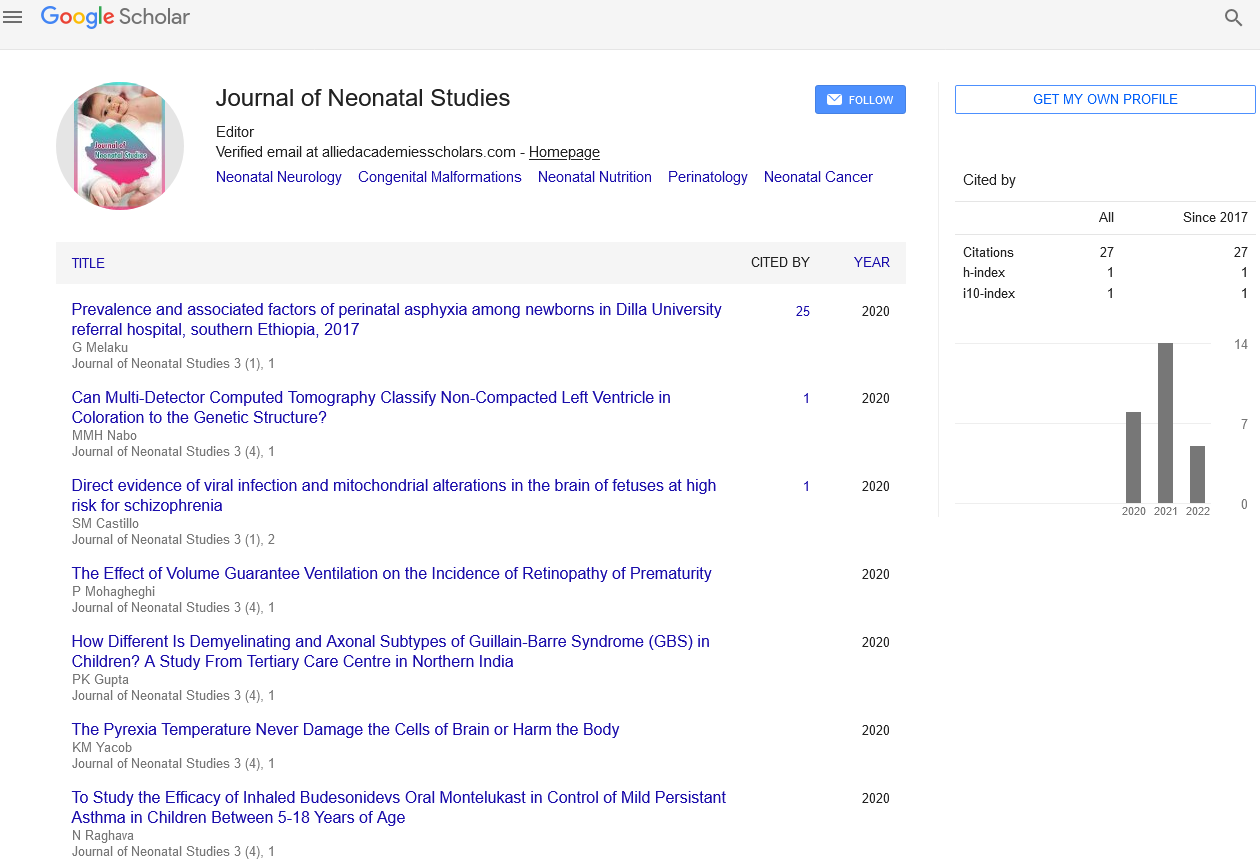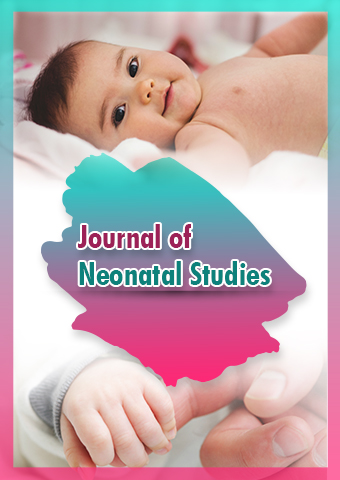Commentary - Journal of Neonatal Studies (2022) Volume 5, Issue 3
The Neonatal Fc Receptor Is Elevated in Immune -Derived Monocyte Cells in Lung Cancer.
Thomas D Mace*
The James Comprehensive Cancer Center, The Ohio State University, 496 W. 12th Ave., Columbus, OH 43210, UK
Received: 02-Jun-2022, Manuscript No. jns-22-40582; Editor assigned: 06-Jun-2022, PreQC No. jns-22-40582 (PQ); Reviewed: 20-Jun-2022, QC No. jns-22-40582; Revised: 23-Jun- 2022, Manuscript No. jns-22-40582 (R); Published: 30-Jun-2022, DOI: 10.37532/jns.2022.5(3).50-51
Abstract
The neonatal Fc receptor (FcRn) is responsible for recycling of IgG antibodies and albumin throughout the body. This mechanism has been exploited for pharmaceutics delivery across an array of diseases to either enhance or diminish this function. Monoclonal antibodies and albumin-bound nanoparticles are examples of FcRn-dependent anticancer therapeutics. Despite its importance in drug delivery, little is known about FcRn expression in circulating immune cells. Through time-off light mass cytometry (CyTOF) we were able to characterize FcRn expression in peripheral blood mononuclear cell (PBMC) populations of pancreatic ductal adenocarcinoma (PDAC) patients and non-cancer donors. Furthermore, we were able to replicate these findings in an orthotropic murine model of PDAC. Altogether, we found that in both patients and mice with PDAC, FcRn was elevated in migratory and resident classical dendritic cell type 2 (cDC2) as well as monocytes and granulocytic myeloid-derived suppressor cell (MDSC) populations compared to tumor-free controls. Furthermore, PBMCs from PDAC patients had elevated monocyte, dendritic cells and MDSCs relative to non-cancer donor PBMCs. Future investigations into FcRn activity may further elucidate possible mechanisms of poor efficacy of antibody immunotherapies in patients with PDAC.
Keywords
pancreatic cancer • neonatal Fc receptor• FcRn• tumor microenvironment• immunosuppression.
Introduction
Fc receptors are a main regulator of humoral immune response. The many roles of Fc receptors include the phagocytic uptake of antibodies, activation of B cells, and maturation of dendritic cells. Fc gamma receptors (FcγR) are a subset of cell surface Fc receptors with high affinity binding of immunoglobulin G (IgG) antibodies. Upon binding to IgG antibodies, FcγRs can propagate both activating and inhibitory immune signals while facilitating IgG endocytosis. The neonatal Fc receptor (FcRe) is primarily intracellular, and functions as a heterodimer comprised of a major histocompatibility complex class I-like alpha chain and molecule of beta-2-microglobulin. Although originally discovered as the receptor responsible for maternal IgG trancytosis across the placental barrier, FcRn has since been implicated in multiple essential somatic functions. The best characterized include FcRn binding to both IgGs and albumin which prevents their catabolism following pinocytosis- or endocytosis in multiple cell types [1-5].
Results
Given FcRn’s established role in mAb recycling and antigen processing in dendritic cells and macrophages, we sought to further explore FcRn expression in the different monocyte, DC, and MDSC populations within an orthotropic mouse model of PDAC (PDX- 1- Cre, LSL-KrasG12D, LSL-Trp53−/−). Splenocytes from eight-week-old, C57BL6 tumor free and tumor-bearing mice were analyzed by flow cytometric to determine percentages of various cell populations (Supplemental Table S2) as previously described. Representative gating schemes and contour plots are shown (Figure 1A). As expected, we observed differences in immune populations when comparing pancreatic tumor-bearing mice to mice without tumors further analysis of these myeloid and APC populations revealed specific alterations of FcRn expression in mice with PDAC relative to tumor-free mice (Figure 2A). We characterized these changes in terms of FcRn positivity, or cells within that population that contain FcRn, as well as FcRn expression level by measuring mean fluorescence intensity (MFI)
Materials and Methods
For murine orthotropic tumor studies, we used samples collected from a previously published study. Briefly, 106 syngeneic luciferase-expressing KPC tumor cells, originally derived from a primary pancreatic tumor in a KPC mouse (PDX-1-Cre, LSLKrasG12D, LSL-Trp53−/−), were injected in Matric gel (BD Biosciences, Franklin Lakes, NJ, USA) into the tail of the pancreas of C57BL6/J mice. Bioluminescent imaging was used to monitor tumor growth, and tumor weight was measured at time of sacrifice. Three weeks following ortho topic injections when mice had terminal tumor volume by imaging and weights, mice were euthanized, and spleens from tumor-free and tumor-bearing animals were removed and placed in PBS on ice
Discussion
Here we are the first to report elevated levels of FcRn in monocyte, dendritic cell and MDSC populations in both human and a murine model of PDAC. However, the implications of this phenomenon remain unclear. PDAC has few presenting symptoms and is exceptionally lethal such that it is commonly diagnosed after metastasis has occurred and treatment options are limited and largely ineffective. Of particular interest are immune checkpoint inhibitors (ICIs), which re-activate host anti-tumor immune surveillance by targeting the axis of tumor, T cells and antigen-presenting cells. Although there are currently nine FDA approved ICIs for multiple cancers, ICI therapy has so far been ineffective in PDAC. In addition to FcRn’s role in antigen presentation, its ability to traffic albumin bound or conjugated drugs may also be affected by changes in FcRn levels. When bound to albumin, the pharmacologic properties of chemotherapeutics such as doxorubicin and paclitaxel can be improved along with therapeutic response.
Acknowledgement
None
Conflict of Interest
No conflict of interest
References
- Nimmerjahn F, Ravetch J.V. Fc-receptors as regulators of immunity. Adv. Immunol. 96, 179–204(2007).
- Nimmerjahn F, Ravetch JV. Fcgamma receptors: Old friends and new family members. Immunity, 24, 19–28(2006).
- Brambell F.W. The transmission of immunity from mother to young and the catabolism of immunoglobulins. Lancet, 2, 1087–1093(1966).
- Pyzik M, Sand KMK, Hubbard JJ, Andersen JT, Sandlie I, Blumberg RS et al. The Neonatal Fc Receptor (FcRn): A Misnomer Front. Immunol, 10, 1540(2019).
- Andersen JT, Daba MB, Berntzen G, Michaelsen TE, Sandlie I et al. Cross-species binding analyses of mouse and human neonatal Fc receptor show dramatic differences in immunoglobulin G and albumin binding. J Biol Chem., 285, 4826–4836(2010).
Indexed at, Google Scholar, Crossref
Indexed at, Google Scholar, Crossref
Indexed at, Google Scholar, Crossref
Indexed at, Google Scholar, Crossref

